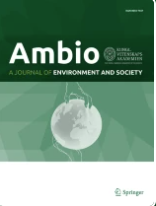- Programme area:Dimensions of Complexity of Aquatic Systems
Temperatures and hypolimnetic oxygen in German lakes: Observations, future trends and adaptation potential
A study of oxygen and temperature trends in 46 German lakes showed that temperatures have risen mainly at the surface, but not in the deep water. This led to increased stratification and lower oxygen concentrations. Scenarios showed that these effects of climate change on oxygen content could be compensated by reducing nutrients.
Flow Rate and Kinetics of Trace Organic Contaminants Removal in Black Carbon-Amended Engineered Media Filters for Improved Stormwater Runoff Treatment
Urban stormwater runoff is an untapped source of freshwater for many water-scarce regions, but improved stormwater treatment is needed for safe use and to protect human and aquatic health. This work provides insights into the kinetic limitations of contaminant removal within biochar and regenerated activated carbon filters and discusses implications for stormwater filter design and operation.
Long-term drought effects on landscape water storage and recovery under contrasting landuses
Process-based, tracer-aided ecohydrological modelling and ML were combined to estimate the effects of long-term drought on water fluxes/storage in the Spree catchment. The recent major droughts resulted in declines in groundwater recharge (>40 %), evapotranspiration (up to 16 %) and soil moisture (up to 6 %). Groundwater levels may not recover in 15 years if precipitation anomalies persist.
Hydroclimatic non-stationarity drives stream hydrochemistry dynamics through controls on catchment connectivity and water ages
Long-term water chemistry and isotope data were integrated to investigate hydrological function and water ages in the Scottish Girnock Burn catchment with an Atlantic Salmon population. Changing climatic conditions and stream flow responses continue to cause changes in water quality and ecosystem services with an increase in low flows, derived from older groundwater with more alkaline chemistry.
Interactions between climate change and urbanization will shape the future of biodiversity
The study shows how interactions between climate change and urbanisation affect biodiversity and ecosystem dynamics. The authors point out that the interactions between these two drivers of global change can have far-reaching effects, and how this knowledge can inform urban planning.
Assessing impacts of alternative land use strategies on water partitioning, storage and ages in drought-sensitive lowlandcatchments using tracer-aided ecohydrological modelling
The authors used advanced process-based ecohydrological modelling to assess the effects of realistic land use scenarios for the Berlin/Brandenburg region on water flux and storage dynamics. Replacing conifer forests with uneven-aged mixed forests with younger, broad-leaved trees had the greatest potential for reducing evapotranspiration and increasing groundwater recharge
Quantifying intra- and inter-annual dynamics of river-floodplain connectivity and wetland inundation with remote sensing and wavelet analysis
The authors used remote sensing data and wavelet analysis to quantify dynamics in floodplain inundation and riverfloodplain connectivity in the Lower Oder Valley National Park. They found marked inter-annual variation of wetland inundation. Heavy precipitation caused summer flooding in only one polder. This information is important for managing flows and sustaining valuable wetland habitats.
Six decades of ecohydrological research connecting landscapes and riverscapes in the Girnock Burn, Scotland: Atlantic salmon population and habitat dynamics in a changing world
Six decades of ecological monitoring provided the science needed to preserve Atlantic salmon. The unique long-term data revealed quantitative changes in the return rates, distribution, size, growth and age of salmon, increasing understanding on how ecosystems are changing in response to a warming climate.
Increases in Water Balance-Derived Catchment Evapotranspiration in Germany During 1970s–2000s Turning Into Decreases Over the Last Two Decades, Despite Uncertainties
The authors studied variations in evapotranspiration from precipitation and streamflow data for 461 German catchments from 1964–2019, by considering also changes in water storage and precipitation uncertainty. Evapotranspiration increased over 1970s–2000s, while it stabilized or even tended to decrease afterwards, and these variations were related with those in precipitation and solar radiation.
Hydrological model skills change with drought severity; insights from multi-variable evaluation
The study investigated the ability of the Continuum hydrological model in simulating the water cycle in the Po river basin (Italy) during droughts of increasing severity. The simulation of streamflow during the severe 2022 drought was characterized by comparatively lower performances than during moderate events, most likely due to challenges in representing high human influences via irrigation.







